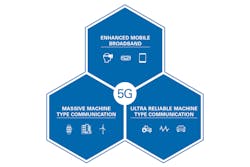It’s all about 5G. No matter where you go or who you’re talking to, 5G is at the center of conversations about exciting new technology. While recent announcements from Mobile World Congress indicate that 5G is already here, it’s not. But we’re getting very close.
The wireless communications community has had a busy year. From progress made on the standardization process and essential updates communicated from regulatory bodies, to gaining understanding of the channel for newly proposed millimeter-wave (mmWave) frequencies and technologies under development that will turn 5G into a commercial reality, anticipation for 5G is at an all-time high. So, what do all of the accomplishments from the past year mean for 5G? And when will 5G be here?
5G Frequencies: A Combination of mmWave and Sub-6-GHz
There’s a lot left to be defined when it comes to 5G, but one thing is certain: Sub-6 GHz spectrum is still very important, and mmWave frequencies will be used to supplement sub-6 GHz technology.
Figure 1 shows the wide range of requirements expected of 5G, from ultra-reliable, high-bandwidth communication for enhanced mobile broadband (eMBB) applications, to the low-bandwidth, machine-to-machine (M2M) type communications we expect to see in Internet of Things (IoT) applications.
1. Targeted 5G applications include enhanced mobile broadband and machine-to-machine communication.
It’s difficult, if not impossible, for one band of spectrum to meet these needs. However, combining two bands provides complementary coverage. Sub-6-GHz spectrum offers better propagation and backward compatibility for narrowband applications, while the contiguous bandwidth at mmWave frequencies enables the key eMBB applications promised by 5G.

